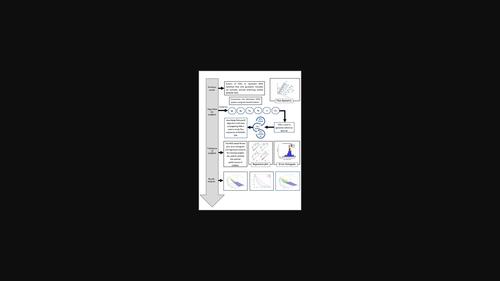当前位置:
X-MOL 学术
›
Int. J. Numer. Method. Biomed. Eng.
›
论文详情
Our official English website, www.x-mol.net, welcomes your feedback! (Note: you will need to create a separate account there.)
A hybrid machine learning algorithm for studying magnetized nanofluid flow containing gyrotactic microorganisms via a vertically inclined stretching surface
International Journal for Numerical Methods in Biomedical Engineering ( IF 2.1 ) Pub Date : 2023-10-06 , DOI: 10.1002/cnm.3780 Priyanka Chandra 1 , Raja Das 1
International Journal for Numerical Methods in Biomedical Engineering ( IF 2.1 ) Pub Date : 2023-10-06 , DOI: 10.1002/cnm.3780 Priyanka Chandra 1 , Raja Das 1
Affiliation

|
The novelty of the present work is to acquire continuous functions as solutions rather than the discrete ones that traditional numerical methods generally produce and to minimize simulation times and higher computation costs that are the fundamental barriers to employing any numerical method. In this study, a novel hybrid finite element-based machine learning algorithm utilizing the Levenberg–Marquardt scheme with backpropagation in a neural network (LMBNN) is presented to analyze the nanofluid flow in the presence of magnetohydrodynamics and gyrotactic microorganisms through a vertically inclined stretching surface in a porous medium. Finite Element Method is used to generate the minimum reference dataset for LMBNN by varying six flow parameters in the form of six scenarios. Surface plots are utilized to understand how these scenarios affect velocity, temperature, concentration of nanoparticles, and density of motile microorganisms. Regression analysis, error histogram analysis, and fitness curves based on mean square error all support the LMBNN's effectiveness and dependability. Results reveal that temperature increases with the rise in Brownian motion and thermophoresis parameter, whereas the reverse trend has been noticed for Prandtl number. The motile microorganism density number decreases with the rise in Prandtl numbers but improves with the porosity parameter.
中文翻译:

一种混合机器学习算法,用于通过垂直倾斜拉伸表面研究含有旋转微生物的磁化纳米流体流
目前工作的新颖之处在于获取连续函数作为解,而不是传统数值方法通常产生的离散函数,并最大限度地减少模拟时间和较高的计算成本,而这是采用任何数值方法的基本障碍。在这项研究中,提出了一种基于混合有限元的机器学习算法,利用带有神经网络反向传播的 Levenberg-Marquardt 方案(LMBNN)来分析在磁流体动力学和旋转微生物存在的情况下通过垂直倾斜拉伸表面的纳米流体流动在多孔介质中。有限元方法用于通过以六种场景的形式改变六个流参数来生成 LMBNN 的最小参考数据集。利用曲面图来了解这些情况如何影响速度、温度、纳米粒子的浓度和运动微生物的密度。回归分析、误差直方图分析和基于均方误差的适应度曲线都支持 LMBNN 的有效性和可靠性。结果表明,温度随着布朗运动和热泳参数的增加而增加,而普朗特数则出现相反的趋势。运动微生物密度数随着普朗特数的增加而减少,但随着孔隙率参数的增加而增加。
更新日期:2023-10-06
中文翻译:

一种混合机器学习算法,用于通过垂直倾斜拉伸表面研究含有旋转微生物的磁化纳米流体流
目前工作的新颖之处在于获取连续函数作为解,而不是传统数值方法通常产生的离散函数,并最大限度地减少模拟时间和较高的计算成本,而这是采用任何数值方法的基本障碍。在这项研究中,提出了一种基于混合有限元的机器学习算法,利用带有神经网络反向传播的 Levenberg-Marquardt 方案(LMBNN)来分析在磁流体动力学和旋转微生物存在的情况下通过垂直倾斜拉伸表面的纳米流体流动在多孔介质中。有限元方法用于通过以六种场景的形式改变六个流参数来生成 LMBNN 的最小参考数据集。利用曲面图来了解这些情况如何影响速度、温度、纳米粒子的浓度和运动微生物的密度。回归分析、误差直方图分析和基于均方误差的适应度曲线都支持 LMBNN 的有效性和可靠性。结果表明,温度随着布朗运动和热泳参数的增加而增加,而普朗特数则出现相反的趋势。运动微生物密度数随着普朗特数的增加而减少,但随着孔隙率参数的增加而增加。



























 京公网安备 11010802027423号
京公网安备 11010802027423号